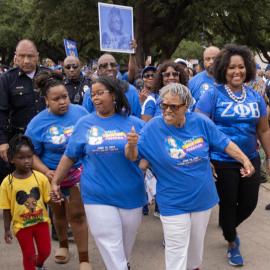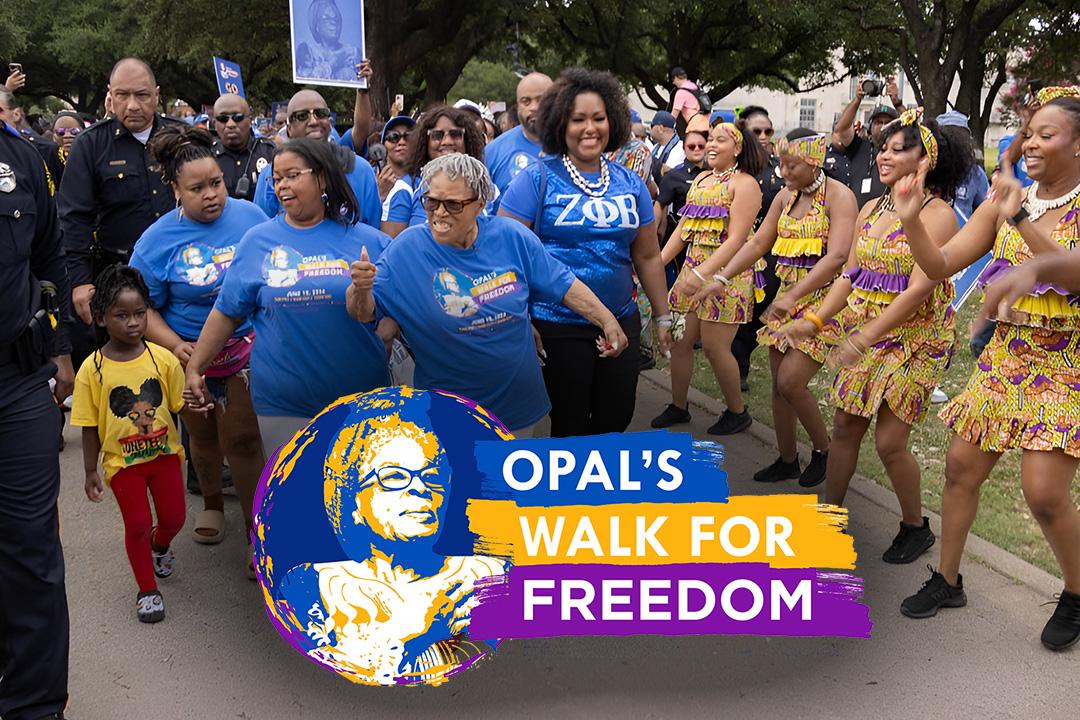By participating in Juneteenth activities, campers connect with the history of emancipation, learn about Black leaders and changemakers, and join in a collective celebration of liberation. The resources below are here to support you in designing thoughtful and fun programming — whether you're just beginning or deepening your traditions.
What Is Juneteenth?
Juneteenth — also called Freedom Day, Emancipation Day, Jubilee Day, and Liberation Day — marks June 19, 1865, the day when enslaved African Americans in Galveston, Texas, learned they were free . . . more than 2.5 years after the Emancipation Proclamation was signed.
Juneteenth is a time to:
- Celebrate freedom and Black resilience
- Share stories of perseverance and justice
- Uplift Black creativity, community, and joy
- Honor the legacy of those who fought — and continue to fight — for equity
From parades to storytelling and cookouts to art, Juneteenth invites people to connect with history, reflect on freedom, and celebrate together.
Why Celebrate with Campers?
Children are natural learners, leaders, and community builders. Including them in Juneteenth activities:
- Teaches history in age-appropriate, accessible ways
- Builds empathy and critical thinking about justice
- Celebrates diversity and Black contributions
- Encourages creative self-expression
- Plants seeds of inclusive traditions for the future
By engaging in Juneteenth, campers learn they are part of a bigger story — one of strength, hope, and joy.
Core Activities for Camp
Purpose: Introduce campers to the Juneteenth flag and its meaning.
Supplies: Flag, explanation guide, optional music ("Lift Every Voice and Sing")
What to Do:
- Begin your celebration with a respectful flag-raising.
- Discuss the symbolism (red, white, and blue for American identity; starburst for new beginnings).
- Invite reflection: "What does freedom mean to you?"

Purpose: Honor Opal Lee, the “Grandmother of Juneteenth,” and her efforts to make Juneteenth a national holiday.
What to Do:
- Share Opal Lee’s story with campers.
- Register your camp through Opal’s Walk for Freedom, or organize an alternative 2.5-themed activity (see “Access Is Freedom” section below).
Learn more about Opal's Walk for Freedom: A Nationwide Camp Initiative.
Purpose: Celebrate African American traditions and express unity through art.
Supplies: Fabric or paper squares, markers/paint, glue, decorations
What to Do:
- Each camper decorates a square reflecting freedom, pride, or community.
- Assemble a camp-wide "freedom quilt" and display it proudly.
- Share the historical roots of quilting in African American culture.
Purpose: Promote creative expression.
Prompts:
- “What does freedom feel like to you?”
- “Write a letter to someone in history who fought for justice.”
- “Describe a world where everyone is free.”
- “Celebrate Black joy through a poem.”
Optional: Host a group reading or freedom circle.
Purpose: Bring history and imagination to life.
What to Do:
- Co-create a play or skits inspired by Juneteenth, Black leaders, or imagined stories of freedom.
- Campers write, direct, or act.
- Share with the camp — or families — live or virtually.
Purpose: Create wearable art to represent unity and identity.
Supplies: Beads (red, black, green, yellow), string
What to Do:
- Teach about Pan-African colors and their meanings.
- Craft bracelets as symbols of solidarity and pride.
Access Is Freedom: Making Activities Inclusive
Juneteenth reminds us that freedom means access for all. Use the symbolic number 2.5 — representing the delay between the Emancipation Proclamation and actual freedom — to inspire inclusive programming.
Accessibility Ideas
Physical Inclusion:
- Offer seated “Freedom Parades” or decorate signs in cabins.
- Use wheelchair-accessible paths and plan rest stops.
- Provide water, sensory-friendly zones, and cooling stations.
Neurodivergent and Sensory Inclusion:
- Offer headphones, quiet spaces, visual schedules, and choice-based participation.
- Explain plans in advance using social stories.
Language and Communication Inclusion:
- Translate materials and instructions.
- Use visuals and plain language.
- Encourage multiple expression modes: drawing, movement, observation.
Reflection Prompt:
“How can we ensure every child feels the joy and pride of this celebration?”
Family Matters: Engaging Caregivers
Juneteenth is a chance to connect generations. Involve families in the learning and celebration!
Ways to Engage Families
- Invite families to events: flag raising, quilt showcases, cookouts
- Send home kits: books, crafts, and conversation prompts
- Host storytelling circles: invite caregivers to share their own freedom stories
- Family-led activities: invite families to read books, lead songs, or cook favorite dishes together
Celebration Without Appropriation: Honoring Food and Culture
Food is central to Juneteenth traditions, especially dishes with red hues (symbolizing resilience and sacrifice) and soul food rooted in survival and celebration.
Best Practices for Food-Based Events
- Honor origins: Share the cultural roots of recipes (e.g., hibiscus-based red drinks from West Africa)
- Uplift local voices: Invite Black families, staff, or chefs to share stories or dishes
- Skip costumes and caricatures: Celebrate through genuine connection, not performance
- Be inclusive: Provide plant-based, halal, or allergy-safe options
Sample Events
Freedom Feast
A joyful community meal with dishes from across the African diaspora, tableside storytelling, and camper reflections on freedom.
Optional Sidebar
Book Spotlight: Soul Food Sunday by Winsome Bingham (a great read-aloud for campers or families!)
Closing Circle: Reflecting and Looking Forward
End your Juneteenth celebration in community with a reflection circle. Invite campers to share:
- What they learned
- What made them feel joyful or proud
- One way they can help build a freer, kinder world
- Share poems or songs
- Display art
Close with an affirmation:
“We celebrate freedom today — and every day!”
Bonus Resource for Camp Leaders
Explore additional educational tools and digital resources at the Smithsonian National Museum of African American History & Culture.

